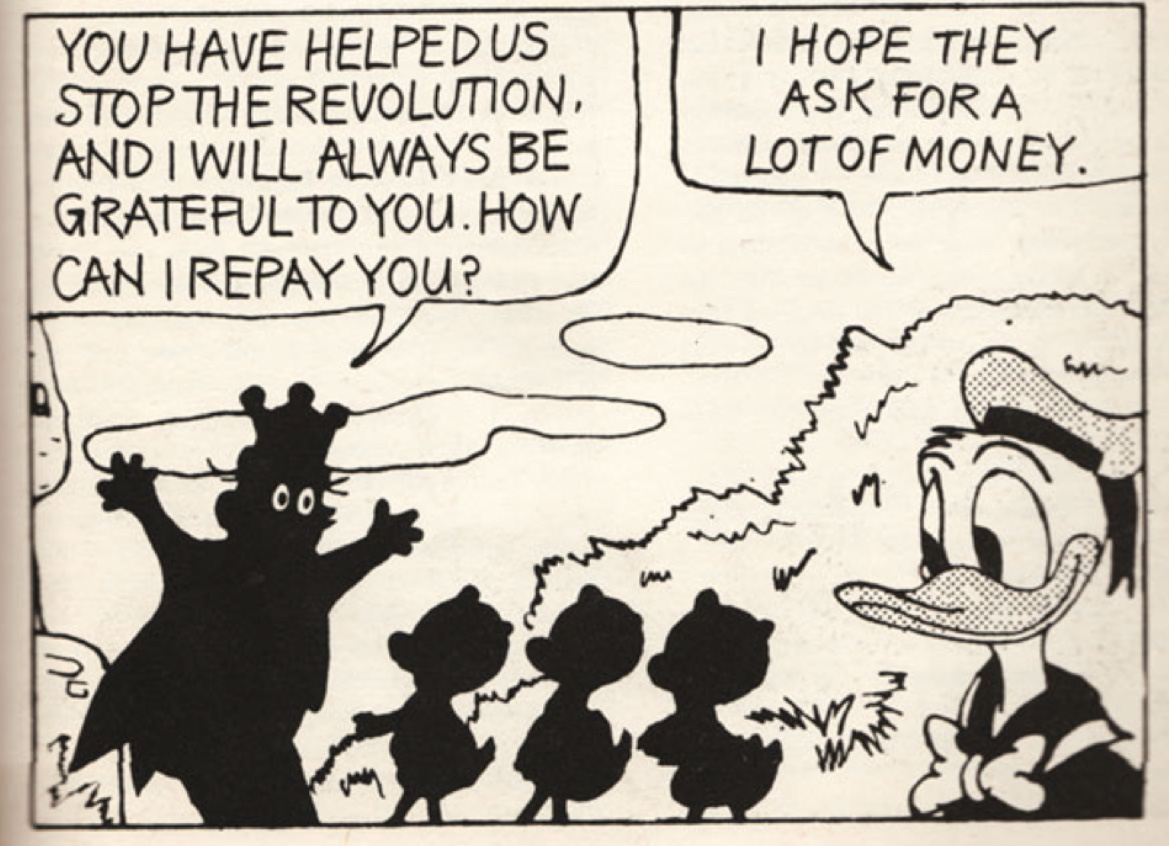How to Read Donald Duck
“A handbook of de-colonization.”
—John Bergerabout the bookabout
First published in 1971 in Chile, where the entire third printing was dumped into the ocean by the Chilean Navy and bonfires were held to destroy earlier editions, How to Read Donald Duck reveals the capitalist ideology at work in our most beloved cartoons. Focusing on the hapless mice and ducks of Disney—curiously parentless, marginalized, always short of cash—Ariel Dorfman and Armand Mattelart dissect the narratives of dependency and social aspiration that define the Disney corpus. Disney recognized the challenge, and when the book was translated and imported into the U.S. in 1975, managed to have all 4,000 copies impounded. Ultimately, 1,500 copies of the book were allowed into the country, the rest of the shipment was blocked, and until now no American publisher has dared re-release the book, which sold over a million copies worldwide and has been translated into seventeen languages.
A devastating indictment of a media giant, a document of twentieth-century political upheaval, and a reminder of the dark undercurrent of pop culture, How to Read Donald Duck is once again available, together with a new introduction by Ariel Dorfman.

“An unforgettable exposé of the true nature of Disney-style American 'innocence"... I still have my copy of that book from the mid-1970s, which, in its Spanish version, had quite literally been consigned to the flames. It was a work that no American publisher would put out at the time, and so my well-worn copy has become a remarkably valuable collector's item.”
—Tom Engelhardt, TomDispatch
About The Author / Editor
in the media
How to Read Donald Duck
“A handbook of de-colonization.”
—John Bergerabout the bookabout
First published in 1971 in Chile, where the entire third printing was dumped into the ocean by the Chilean Navy and bonfires were held to destroy earlier editions, How to Read Donald Duck reveals the capitalist ideology at work in our most beloved cartoons. Focusing on the hapless mice and ducks of Disney—curiously parentless, marginalized, always short of cash—Ariel Dorfman and Armand Mattelart dissect the narratives of dependency and social aspiration that define the Disney corpus. Disney recognized the challenge, and when the book was translated and imported into the U.S. in 1975, managed to have all 4,000 copies impounded. Ultimately, 1,500 copies of the book were allowed into the country, the rest of the shipment was blocked, and until now no American publisher has dared re-release the book, which sold over a million copies worldwide and has been translated into seventeen languages.
A devastating indictment of a media giant, a document of twentieth-century political upheaval, and a reminder of the dark undercurrent of pop culture, How to Read Donald Duck is once again available, together with a new introduction by Ariel Dorfman.

“An unforgettable exposé of the true nature of Disney-style American 'innocence"... I still have my copy of that book from the mid-1970s, which, in its Spanish version, had quite literally been consigned to the flames. It was a work that no American publisher would put out at the time, and so my well-worn copy has become a remarkably valuable collector's item.”
—Tom Engelhardt, TomDispatch
About The Author / Editor











